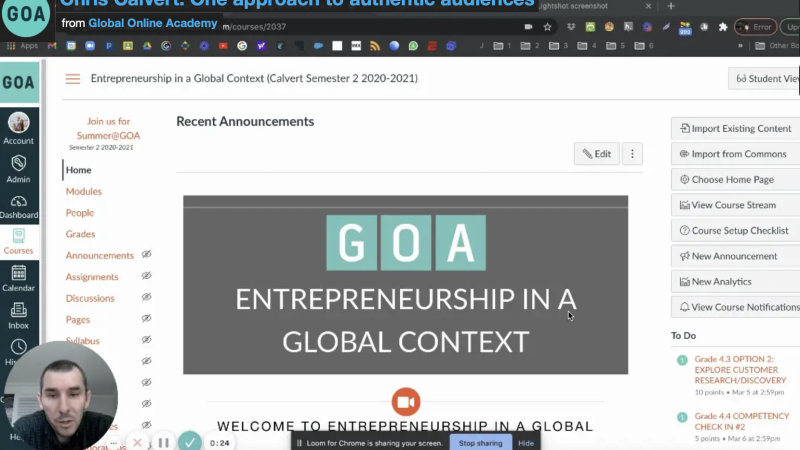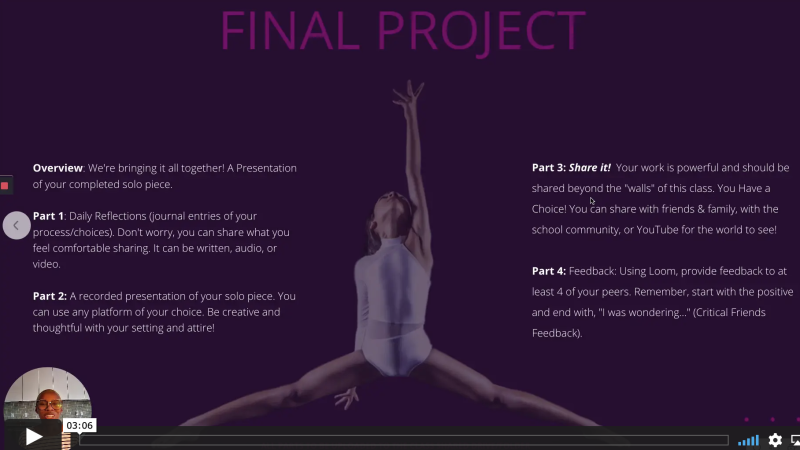Shifting From Lessons to Learning Experiences: Designing for Deeper Learning
Over the last 18 months, as many educators adapted to online and hybrid learning, many of us lost discrete blocks of time - the familiar 45 or 90 minute lesson chunks - and had to structure learning in new ways. Those adaptations, while sometimes challenging, provide a pathway into a foundational premise of competency-based learning.
A skills-based approach invites teachers to reconsider time and relevance (how does what students are learning have a purpose beyond the classroom?) and to design learning experiences that are not driven by individual lessons, but immersive experiences framed around authentic skills. When our focus as educators moves to designing skills-based processes and moves away from planning isolated lessons where all students move in lock-step, the potential for individual student learning increases. Learning experiences designed for equity, relevance, and cognitive challenge emerge.
Shifting from lessons to experiences begins with examining three questions:
What is deeper learning?
Deeper learning offers students opportunities to move from gaining knowledge to using knowledge and skills in ways that have lasting impacts and that mimic how those skills live in the real world. In Teaching for Deeper Learning, Sarah Fine and Jal Mehta share that deeper learning means teachers make choices for depth over breadth, for applications of skills in creative contexts, and for students to have a role as co-designers in learning.
When students are engaged in deeper learning experiences, they are doing cognitively complex tasks that have purpose. Dr. Pedro A. Noguera reinforces how the shift from lessons to experiences invites deeper learning. “In classrooms and schools focused on deeper learning, teachers are constantly looking for the evidence that students are learning, and students are constantly looking for their own evidence of learning…[the classroom] becomes a working place, not a listening place. When teachers teach with a focus on the evidence of learning, they teach differently.”
How do we design for real-world or authentic learning?
Authentic learning ultimately means that students are putting skills into practice that matter beyond our classrooms. Processes like design thinking and project-based learning offer frameworks that not only encourage teachers to shift from designing individual lessons to thinking about the scope of a learning experience, but they also offer students personalized processes by which they put skills into action. Within a learning process, students get to mimic the work of real-life project execution taking steps to pre-reflect, plan, brainstorm, gather feedback, try, revise, demonstrate growth, and reflect again.
Authentic learning does not have to mean a large-scale project. Open-ended performance tasks, case studies, and opportunities to align work to audiences can form any scope of experiences. What ties all moments of authentic learning together isn’t the amount of time students spend in a process, it is the opportunity for students to apply skills that hold meaning beyond that experience.
Listen to Chris Calvert of GOA and Jakarta Intercultural School share the impact of authentic experiences on GOA’s Entrepreneurship in a Global Context course.
Chris Calvert of GOA and Jakarta Intercultural School
How do we redefine time?
Another key component in making the shift from lessons to learning experiences is to rethink our approach in day-to-day classroom planning and practice. Instead of viewing curriculum as a checklist and breaking down a unit into fixed individual lessons, we instead design for experiences that reflect elements of what a specific discipline might look like in an authentic context.
Our planning as educators shifts from timing what students will start and stop in a given block of time to planning for a process students will follow, focusing on the structures that empower students to move on their own pathways. This can present a significant shift, requiring teachers to take on the role of facilitators of a learning experience considering both project planning and metacognition: How will students know their goals? How will they check-in on progress? At what touchpoints will they submit evidence for learning? When will students gather feedback? How will they reflect on next steps? Educators’ roles shift from leading learning in a block of time to facilitating a process that invites students to co-lead.
Watch Vanessa Aird of Edmund Burke School offer warm context to her students on an upcoming learning experience. She describes a final project where students put their skills into action, ensuring reflection and feedback are a part of the process.
Vanessa Aird of Edmund Burke School
Making the Shift
The uncertainty of our global futures demands that we equip students to learn in a variety of contexts and in ways that transcend their school experiences. Answering the question of “What do you know?” does not ensure students are prepared for life beyond the classroom. “How do you apply and create with what you know?” is the new measure. To better prepare students, we must create opportunities for them to develop and practice skills that have real-world impact. Shifting from lessons to learning experiences shifts your students to deeper learning that lasts.
This article is part of a series on the practical shifts classroom teachers can make to promote agency, equity, and transfer. To learn more, check out GOA’s professional learning course catalog, which features courses for educators around making these shifts in classrooms and courses. Additionally, the resources below continue the conversation on learning experience design:
Celebrate Students! How to Participate in the Catalyst Conference by: Emily Hamlin
Four Skills that Matter to Deeper Learning, According to Students by: Jason Cummings
Making the Shift from Time to Performance: Three Priorities for Student-Centered Learning by: Deepjyot Sidhu
What if We Replaced Academic Awards with Exhibitions of Learning? by: Sara Tahir


